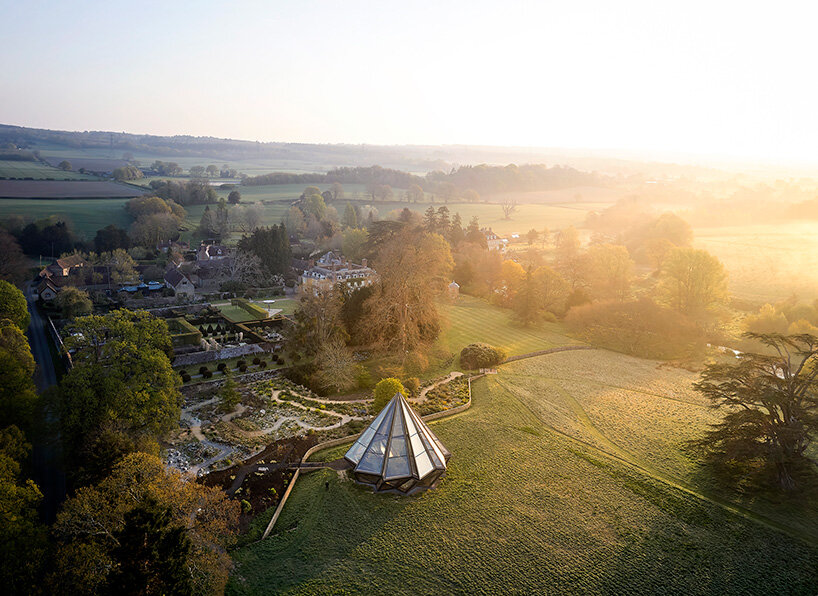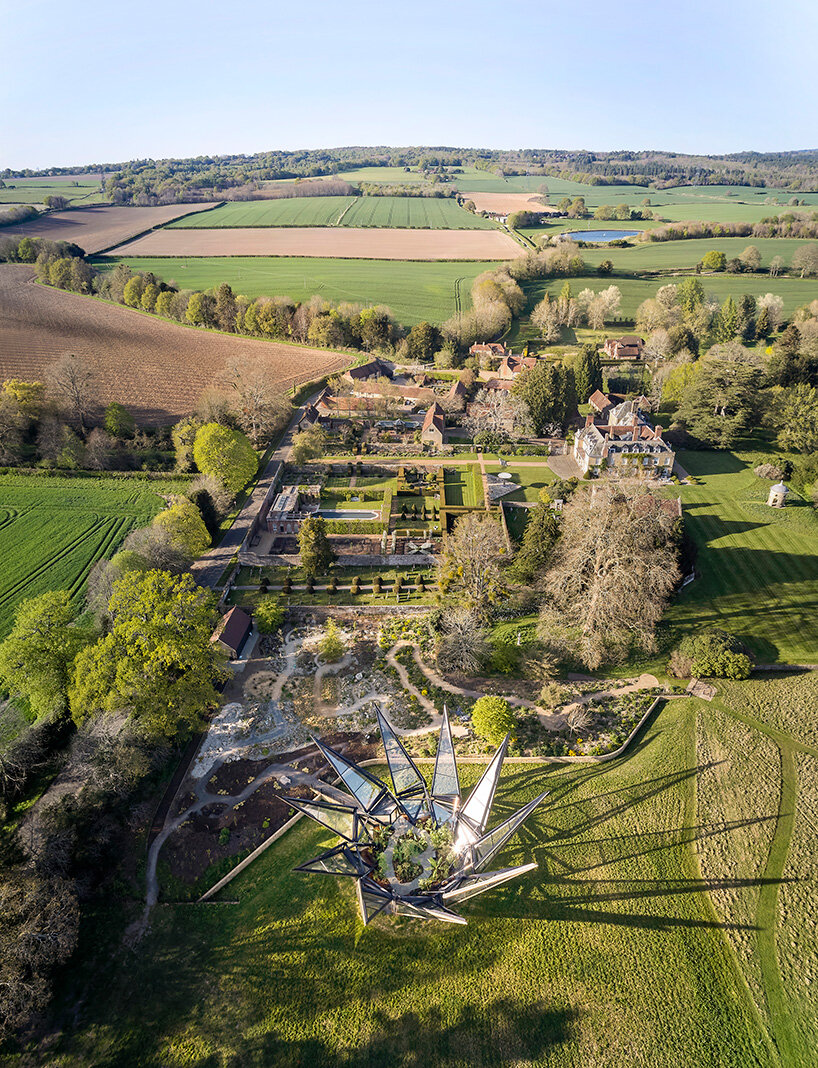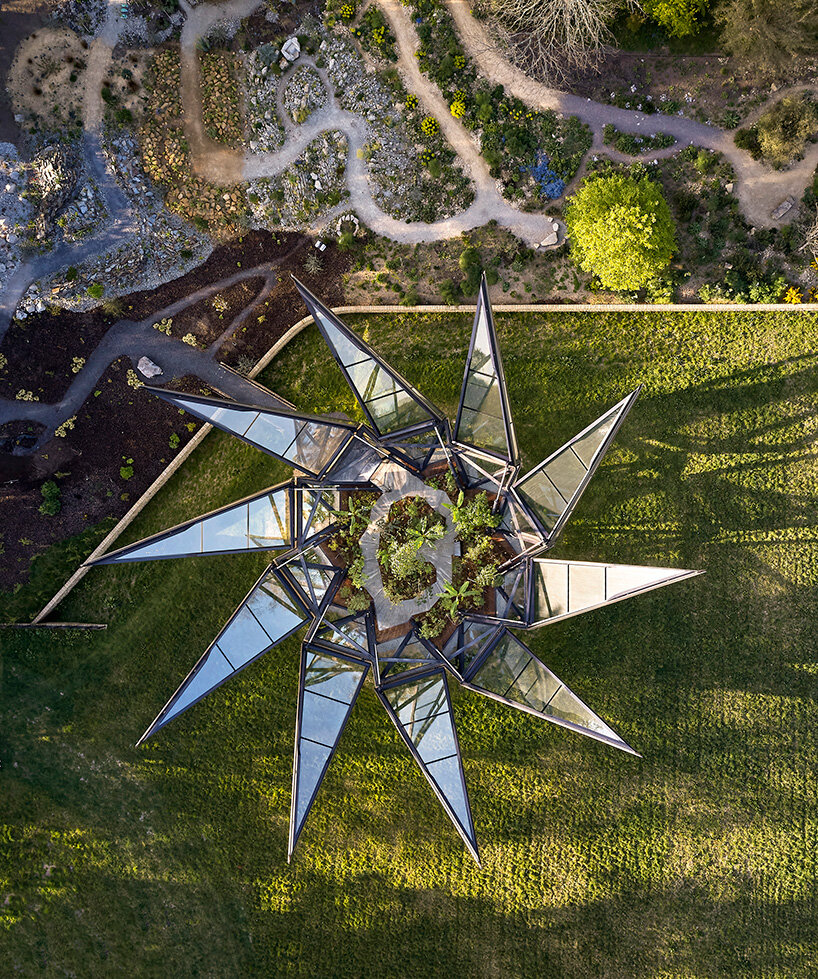heatherwick studio’s kinetic glasshouse unfolds like a flower
the GLASSHOUSE Protects SUBTROPICAL PLANTS
Heatherwick Studio and the National Trust have unveiled a kinetic Glasshouse at the Woolbeding Gardens. Set on the edge of the historic estate in West Sussex, the unfolding structure acts as the focal point of a new garden, highlighting how much the ancient Silk Route has influenced English gardens of today.
Heatherwick’s kinetic Glasshouse features ten steel ‘sepals’ with glass and aluminum façade which take four minutes to open, creating an immense crown-shaped 141m2 space hosting subtropical plants — the only ones in the garden that need protection.

images by Hufton + Crow unless otherwise noted
THE FINAL STOP AT THE SILK ROUTE GARDEN
The latest contemporary addition to the Woolbeding Gardens is a Silk Route Garden that invites visitors on a 12-step journey through a landscape influenced by the ancient trading route between Asia and Europe. This route provided exchanged commodities such as silk, as well as plant species new to Britain like rosemary, lavender and fennel. The path allows visitors to move through over 300 species and concludes in the Glasshouse.
Heatherwick’s Glasshouse references the movement of a flower opening its petals with its 10-sided pyramidal shape unfolding to create an immense space in the shape of a crown. By deploying cutting-edge engineering, it provides a functional and protective structure for the subtropical trees and shrubs housed inside. On warm days, the Glasshouse opens its ‘sepals’ using a hydraulic mechanism to allow the plants access to sunshine and ventilation while in colder weather, the structure remains closed providing shelter to the species.

‘This is a place and a project that literally unfolds,’ said Thomas Heatherwick. ‘You step through this bewitchingly beautiful garden and discover an object that starts like a jewel and ends like a crown, as the Glasshouse slowly unfurls. I think it also speaks of our need to keep creating amazing pasts. Weaving contemporary inventions into the fabric of historic settings and having the confidence to let each one speak to the other.’

The Glasshouse itself shelters an impressive, rare specimen of an Aralia Vietnamensis which provides shade for a collection of tender ferns growing alongside umbrella trees, magnolias and bananas.
